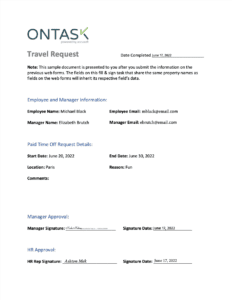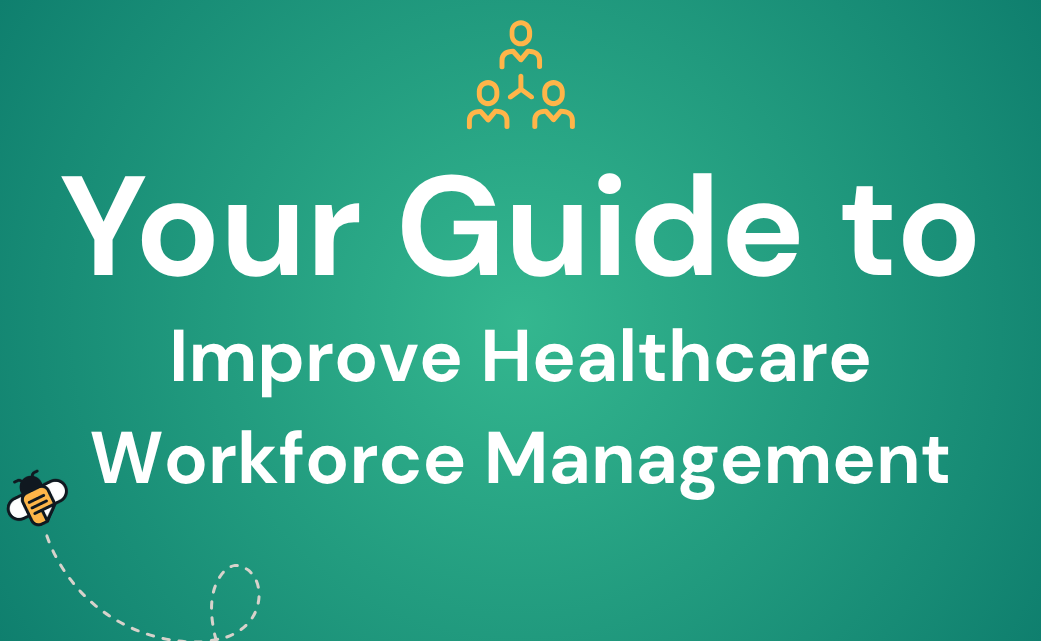Your sales team just landed a major client — a cause for celebration! But then reality sets in: there’s a contract that needs to go through multiple department approvals, legal reviews, and customer signatures. What should take days instead drags into weeks of endless email chains and status meetings.
Sound familiar? If so, there’s a better way.
A well-constructed contract management strategy replaces manual tracking with digital workflows, streamlining the process from drafting to signature — without the constant back-and-forth. In this guide, we’ll show how to optimize your contract processes — from initial requests to renewals—with actionable steps to catch errors early, get faster approvals, and protect your business interests.
Whether you’re fixing a broken process or building a new one, this guide will help you manage more contracts without adding more hours to your workday.
What Does Contract Management Entail?
Contract management is the process of overseeing contracts as they flow through your workflow — from the initial request to execution and renewal. The proper tools allow you to gain control over each step in the process, helping your team work more effectively while reducing risks.
Digital contract management tools make it easy to track:
- The current status and location of each contract
- Who needs to review or approve next
- When legal reviews are required
- Post-signature obligations and deadlines
- Upcoming contract renewals and expirations
Let’s break down the key components of a contract management workflow and explore how they come together to form an efficient, end-to-end system.
Requesting & Drafting
Every contract starts with a business need. Whether it’s closing a sale, hiring a vendor, or forming a partnership, the request stage is where that need is translated into clear contract requirements.
A solid contract management strategy begins by identifying:
- Business objectives the contract must achieve
- Key stakeholders involved in the agreement
- Timeline requirements and deadlines
- Budget and resource implications
- Potential risks and compliance needs
Let’s review how the drafting process looks.
Drafting Your Contract
Contract drafting is like building a house — you need the proper blueprints and materials before you start. There’s a catch: use the wrong materials or skip important safety features, and you could face expensive repairs or legal headaches down the road. That’s why getting the details right at the beginning matters. One missing clause or outdated term could expose your company to fines, disputes, or unnecessary risks.
Here’s what you need to create a solid contract draft:
Getting the Right Info
Ever played 20 Questions? That’s what good contract drafting feels like. You need to ask:
- What exactly are we agreeing to do?
- Who needs to weigh in on the details?
- When does everything need to happen?
- How much can we spend?
Thorough answers ensure clarity and accuracy in your contract.
Building Your Contract
Think of contract templates like recipe cards — they provide a solid starting point, but you may need to customize the “ingredients” to fit your needs.
Here’s how to tailor your contract:
- Pick a template that fits your needs
- Add your company’s special requirements
- Include the must-have legal language
- Tweak the wording so everyone understands it
The goal? Create a clear, complete contract that won’t come back to haunt you later.
Keeping It Legal (Without the Headaches)
Remember that house-building metaphor? Well, think of legal compliance as your building inspector. You need someone checking that everything’s up to code, but you don’t want them camping out at the construction site forever.
That’s where digital contract tools come in. They work like a well-versed assistant who:
- Keeps track of all the latest building codes (legal requirements)
- Flags when something needs updating
- Double-check that you’re using approved materials (clauses)
- Lets inspectors (lawyers) focus on the tricky stuff
Your legal team can stop worrying about routine paperwork and focus on what matters — ensuring your contracts protect your business. The software handles the groundwork, while your legal experts tackle the nuanced decisions that require real expertise.
The right technology will catch common issues, while your legal pros guide the big decisions. This tag-team approach means better contracts, faster approvals, and fewer surprises down the road.
Let’s Make a Deal: The Art of Contract Negotiations
Remember playing “Red Light, Green Light” as a kid? Contract negotiations can feel a lot like that — stop, go, change direction, and start over if you slip up. Negotiating contracts is one of the trickiest parts of closing a deal, but it doesn’t have to be a headache.
Contract negotiation automation can help your business deals by keeping everyone on the same page. Think of it as your negotiation command center — no more hunting through email chains or wondering which version is current.
Keeping Track of Changes (Without Losing Your Mind)
Every tweak in the negotiation process needs a paper trail. Here’s what usually gets discussed:
Define Financial Terms
- Who pays what, and when
- What happens if someone’s late
- How prices might change over time
Establish The Fine Print:
- Who’s responsible if things go wrong
- What quality standards need to be met
- How success will be measured
Modern contract tools track all these moving pieces automatically, ensuring every change is logged, remembered, and shared with the team.
Setting Clear Expectations
Before negotiations begin, establish your framework. Good negotiators always know their priorities. For instance, they:
- Identify “must-haves” vs. “nice-to-haves”
- Set acceptable price ranges and limits
- Pinpoint which changes need executive approval
- Determine when to involve the legal team
This homework helps you make faster decisions while keeping your company safe.
Keeping Negotiations from Stalling
Success in negotiations requires steady progress. Focus on:
- Set and meet clear deadlines
- Keep discussions focused on critical issues
- Document verbal agreements immediately
- Ensure all changes meet compliance requirements
With this structured approach, you can turn weeks of back-and-forth into an efficient process that moves deals forward while protecting your interests. Digital contract management tools allow you to set due dates, reminders, and parameters to keep negotiations on track from start to finish.
Getting to the Finish Line: Approval & Execution
You’ve negotiated the perfect deal — now it’s time to make it official. This is often where progress grinds to a halt, but it doesn’t have to. The key is keeping everyone moving without sacrificing proper review.
Getting Approvals Without Compromising Sanity
Getting approvals used to mean playing email tag with half your company. Now, it’s much simpler. Modern contract management systems turn this process into a straightforward process where everyone knows their part.
Your legal team checks that all the protective language is in place. Finance makes sure the numbers add up. Department heads confirm they can deliver what’s promised. And the best part? The system keeps track of who’s done what and nudges anyone falling behind schedule.
When someone needs to review the contract, they get an automatic alert. If the review takes too long, the system sends a friendly reminder—no awkward “just checking in” emails or scrambling for last-minute signatures required.
Getting Those Signatures
Finally — all the approvals are in! Now comes the fun part: getting everyone to sign on the dotted line. Electronic signatures have made this much easier, but there’s still some important housekeeping to handle. You’ll need to verify that each person signing has the authority to do so (nobody wants to restart because the wrong person signed). Then, ensure the signatures are collected in the correct order, if required.
The good news? Modern systems handle most of this automatically. They’ll collect all the supporting documents, create a clear record of who signed what and when, and keep everything stored safely. No more hunting through email attachments or wondering if you have the final version.
After the Ink Dries
Getting signatures isn’t the finish line — it’s more like the starting gun. Now, you need to ensure everyone knows what they’re supposed to do and when they need to do it. Share copies with everyone involved, inform teams about their responsibilities, and set up alerts for important dates and deliverables.
Think of it as creating a roadmap for your contract’s future. Everything gets properly documented and organized so you can find what you need when needed. This attention to detail may seem overkill now, but you’ll thank yourself later when someone asks about that clause in that one contract from six months ago. You can even automate the details that go out after signatures are collected with the right tool.
Keeping Everything in Its Place: Smart Contract Storage
Remember the last time someone asked you to find an old contract? If you’re still digging through shared drives or email chains, there’s a better way. Modern contract storage acts like a digital filing cabinet—with a brilliant assistant who never loses anything and always knows exactly where to look.
Your Digital Contract Home
Imagine never having to wonder which version of a contract is current or who made what changes and when. A central contract repository keeps everything organized and secure. Need to check a clause from last year’s agreement? It’s right there. An auditor asking questions? No problem—you’ve got a complete history at your fingertips.
The best part? Modern systems handle all the technical stuff automatically. They’ll encrypt your sensitive information, control who can access what, and keep detailed logs of every interaction. It’s like having a security team overseeing your contracts 24/7—without the awkward break room conversations.
Finding What You Need, When You Need It
Organization makes all the difference. Just like you wouldn’t throw all your clothes in one big drawer, you need a system for your contracts. Modern systems let you sort and find agreements based on what matters to your business, whether by department, value, status, or deadline. Need to view every contract with a specific vendor? Or see all agreements expiring next quarter? Just type and click. It’s that simple.
Keeping Auditors Happy
Nobody enjoys surprise audits, but with the right system in place, they’re no big deal. Every click, change, and approval gets logged automatically, creating a clear trail of who did what and when. When auditors or regulators knock, you won’t need to scramble — everything they need is accessible on both mobile and desktop devices, all in one central location.
Reporting & Performance: Making Sure You Get What You Paid For
Getting signatures is just the beginning. Now comes the part that really matters: making sure everyone delivers what they promised. Simplified contract tracking helps you stay on top of everything without getting buried in spreadsheets and calendar reminders.
Ensuring Promises are Delivered On
Contract monitoring is essential to ensure you’re in the right business relationships. Are vendors delivering on time? Is the quality up to par? Are you getting the service levels you’re paying for? Staying on top of the agreed-upon services is easy when you can get info on a contract at a moment’s notice.
Financial matters need extra attention, too. Late payments, missed price adjustments, or overlooked fees can seriously impact your bottom line. Robust contract management tools track payment schedules, budget impacts, and price changes, flagging anything that needs your attention.
Learning From Your Contracts
Your contracts can teach you a lot about your business — if you know how to listen. Modern systems analyze everything from approval bottlenecks to negotiation patterns, showing exactly where deals slow down and which compromises work best. It’s like having a business coach who’s watched every deal you’ve ever made.
What looked good on paper doesn’t always work as well in practice. Maybe a seemingly fair pricing structure is actually costing you money, or service requirements that seem reasonable are causing headaches. Good analytics catch these issues early, allowing you to address them before they become major problems in future contracts.
Staying Ahead of Problems
Nobody likes surprises in business — especially the expensive kind. That’s why modern systems act like an early warning system for your contracts. Coming up on an important deadline? Need to renew a certification? Automated alerts give you a heads-up with plenty of time to act, ensuring you don’t miss out on deals.
Problems rarely appear out of nowhere. Usually, there are warning signs — like missed deadlines starting to pile up or quality metrics slowly slipping. Your contract management system tracks these patterns and lets you know when something needs attention. This way, you can have productive conversations about fixing issues instead of emergency meetings about missed obligations.
When Contracts Need an Update: Making Smart Changes
Business doesn’t stand still, and neither should your contracts. You may need to add new services, adjust timelines, or update pricing. That’s where amendments come in — they’re the updates for your contracts to keep them current without starting from scratch.
Knowing When to Change Things Up
Sometimes you just need to tweak a few details, like adjusting a delivery schedule or updating payment terms. Other times, you may need bigger changes — like adding new services or completely restructuring the deal.
The trick is knowing which changes need a simple amendment and which ones call for a fresh contract. Your legal team can help set clear guidelines so everyone knows which path to take.
Making Changes the Right Way
Just like the original contract, amendments need proper care and attention. Think of it as maintaining a chain of evidence — every change needs to be documented, approved, and connected back to the original agreement. Modern systems make this easy by automatically keeping track of what changed, who approved it, and why.
The process looks a lot like creating the original contract, but with an extra challenge: making sure all the pieces fit together perfectly. You need to know exactly how each change affects the original agreement and any other amendments that came before. Fortunately, the software handles all the heavy lifting for you.
Building Your Contract History
Every amendment tells part of your contract’s story. Why was the change necessary? Who requested it? What problem were you solving? Keeping track of these details may seem like extra work now, but it pays off big time when you’re:
- Working on your next deal with the same partner
- Explaining why certain changes were made
- Looking for patterns in your business relationships
- Planning ahead for contract renewals
Think of it as building your institutional memory. The more you know about why changes were made in the past, the smarter you’ll be about making them in the future.
Expiration & Renewals: What’s Next for Your Contract?
Every contract eventually reaches a crossroads. Maybe it’s working great, and you want to keep it going. Maybe it needs some tweaks. Or perhaps it’s time to explore new options. Whatever you decide, you’ll want to make your choice based on facts, which is why having reliable data is essential.
Looking Back to Move Forward
Before you decide what to do next, take a good look at how things have been going. Has your vendor been delivering on time? Are you getting good value for your money? What do your team members think about the relationship?
Many considerations go into a move-forward plan, so dig deeper to understand the real story. Sure, they met all the requirements, but was it always a struggle? Maybe they hit their targets, but were they great to work with? These insights help you decide whether to stick with what you’ve got or look for something better.
Getting Ready for Round Two
Don’t wait until the last minute to think about renewal. Modern systems give you plenty of heads-up time, so you can do your homework. You’ll want to check if the current deal still makes sense for your business.
Are market prices still in line? Have your needs changed? There may be new services you should add or old ones you don’t need anymore.
Talk to everyone involved. Get feedback from your team about what’s working and what isn’t. The people using the service or working with the vendor daily often have the best insights.
Wrapping Contracts Up with a Bow
If you decide not to renew, you’ll want a clean break. That means making sure everyone’s done what they promised. Get all deliverables checked off, verify final payments, and handle any transition needs. Think of it like a moving-out inspection — you want everything documented and in order.
Learn from experience. What worked well? What would you do differently next time? These lessons are gold for future contracts, whether with the same partner or someone new.
Keeping good records. Some contracts need specific documentation for legal reasons. Others have confidentiality clauses that stay active even after the contract ends. Your system can help track these requirements so nothing slips through the cracks.
Mastering Contract Management with Docubee
From initial requests to renewals, contracts demand attention to detail. Missing a key clause, overlooking an obligation, or losing track of important deadlines can cost your business time, money, and relationships.
Docubee enhances your contract management strategy at every stage:
- Draft stage: AI-powered creation and automated compliance checks
- Negotiation: Real-time collaboration and version control
- Execution: Streamlined approvals and secure e-signatures
- Post-signature: Automated tracking and renewal management
Don’t let inefficient contract processes put your agreements at risk. Request a demo today to see how Docubee protects your interests while accelerating your contract process.


















